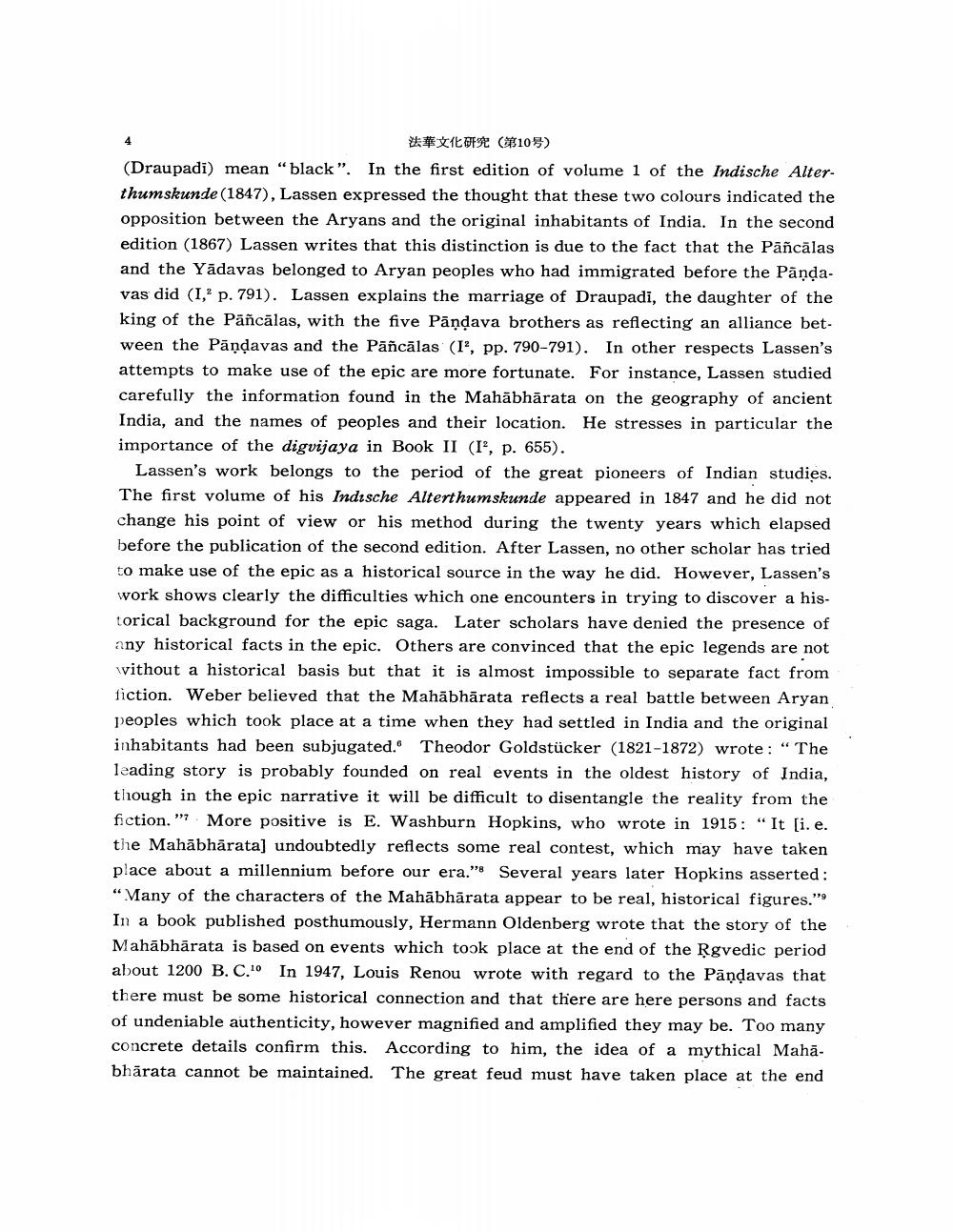Book Title: Study Of Mahabharata Author(s): J W De Jong Publisher: J W De Jong View full book textPage 4
________________ 法華文化研究(第10号) (Draupadi) mean "black". In the first edition of volume 1 of the Indische Alterthumskunde (1847), Lassen expressed the thought that these two colours indicated the opposition between the Aryans and the original inhabitants of India. In the second edition (1867) Lassen writes that this distinction is due to the fact that the Pañcālas and the Yadavas belonged to Aryan peoples who had immigrated before the Pandavas did (I, p. 791). Lassen explains the marriage of Draupadi, the daughter of the king of the Pañcālas, with the five Pāṇḍava brothers as reflecting an alliance between the Pandavas and the Pañcālas (I2, pp. 790-791). In other respects Lassen's attempts to make use of the epic are more fortunate. For instance, Lassen studied carefully the information found in the Mahabharata on the geography of ancient India, and the names of peoples and their location. He stresses in particular the importance of the digvijaya in Book II (I2, p. 655). Lassen's work belongs to the period of the great pioneers of Indian studies. The first volume of his Indische Alterthumskunde appeared in 1847 and he did not change his point of view or his method during the twenty years which elapsed before the publication of the second edition. After Lassen, no other scholar has tried to make use of the epic as a historical source in the way he did. However, Lassen's work shows clearly the difficulties which one encounters in trying to discover a historical background for the epic saga. Later scholars have denied the presence of any historical facts in the epic. Others are convinced that the epic legends are not without a historical basis but that it is almost impossible to separate fact from fiction. Weber believed that the Mahabharata reflects a real battle between Aryan peoples which took place at a time when they had settled in India and the original inhabitants had been subjugated." Theodor Goldstücker (1821-1872) wrote: "The leading story is probably founded on real events in the oldest history of India, though in the epic narrative it will be difficult to disentangle the reality from the fiction. More positive is E. Washburn Hopkins, who wrote in 1915: "It [i. e. the Mahabharata] undoubtedly reflects some real contest, which may have taken place about a millennium before our era." Several years later Hopkins asserted: "Many of the characters of the Mahabharata appear to be real, historical figures." In a book published posthumously, Hermann Oldenberg wrote that the story of the Mahābhārata is based on events which took place at the end of the Rgvedic period about 1200 B. C.10 In 1947, Louis Renou wrote with regard to the Pāṇḍavas that there must be some historical connection and that there are here persons and facts of undeniable authenticity, however magnified and amplified they may be. Too many concrete details confirm this. According to him, the idea of a mythical Mahābharata cannot be maintained. The great feud must have taken place at the end 997Page Navigation
1 2 3 4 5 6 7 8 9 10 11 12 13 14 15 16 17 18 19
